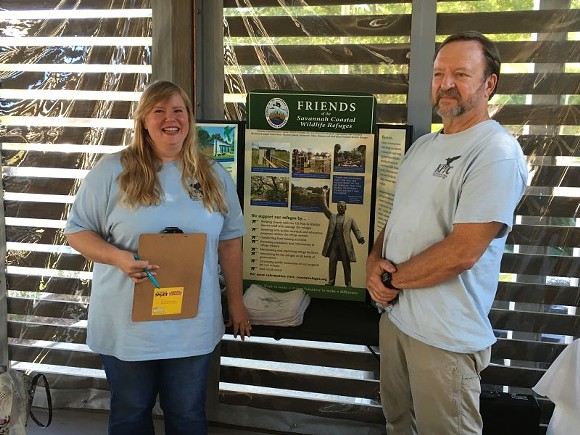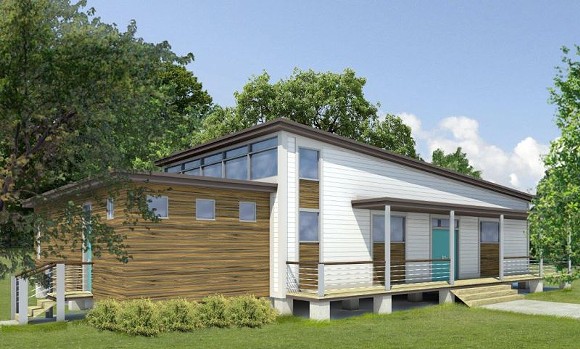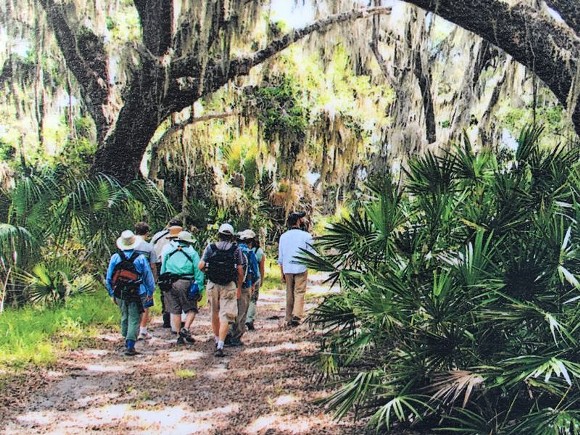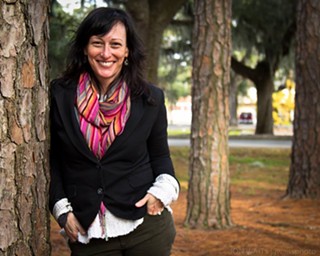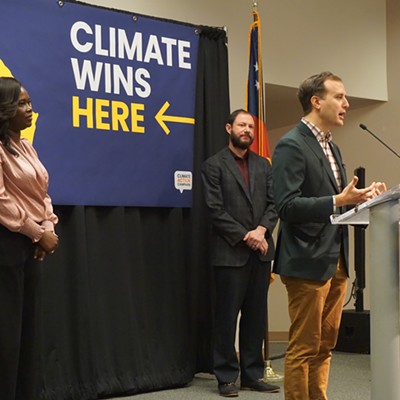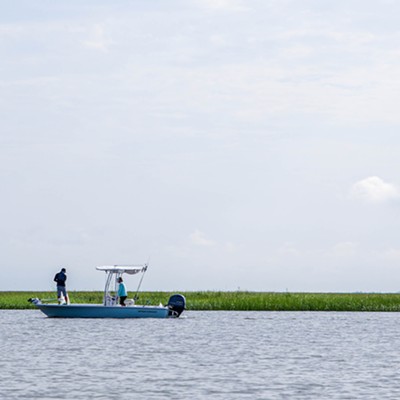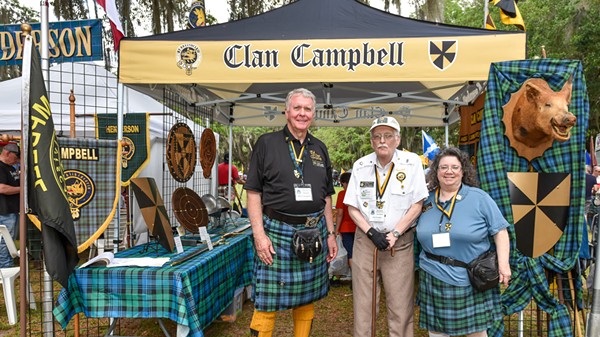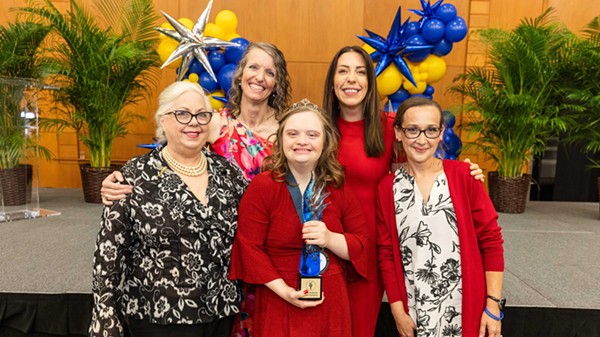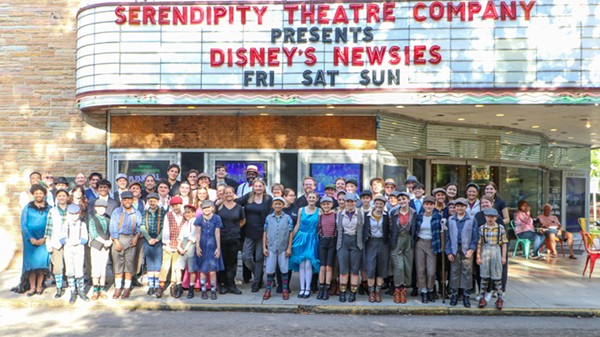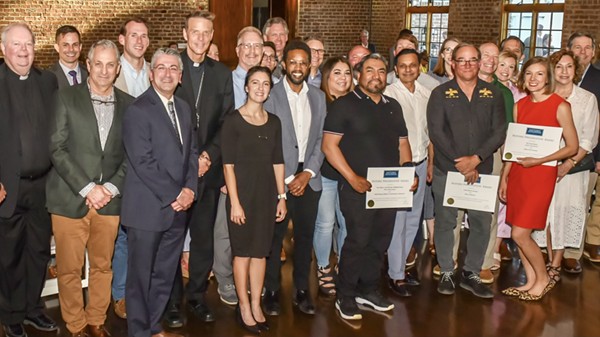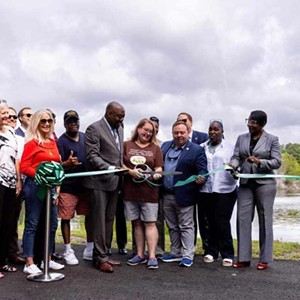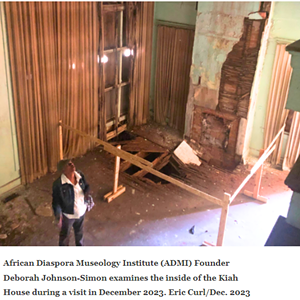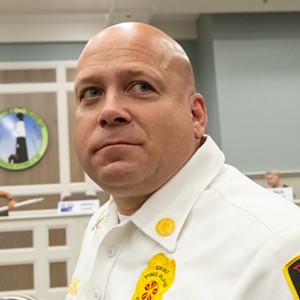ACCORDING to a 2014 study, the average American child spends more than seven hours in front of a screen and less than 15 minutes outdoors.
All that inside time has been linked with the shocking escalation in childhood obesity and ADHD over the past decade, and new research suggests it can cause permanent brain damage.
Last Child in the Woods author Richard Louv coined it “nature deficit disorder,” and it’s a condition that Dr. Rick Shields aims to help correct.
“I grew up running around the woods in rural Ohio, and it really instilled in me an appreciation for the natural world,” says Shields, an ER doctor at Candler Hospital. “I find the statistics incredibly concerning.”
As president of the Friends of the Savannah Coastal Wildlife Refuges, Dr. Shields has made it a mission to get more kids out into the wild. He spends hours every month volunteering at the nearby Savannah Wildlife Refuge off U.S. Highway 17, a 29,000-acre slice of freshwater marshland, tidal creeks and hardwood forest that straddles the Georgia/South Carolina border.
The Dept. of the Interior’s Fish & Wildlife Service manages the former rice plantation as part of the Savannah Coastal Refuges Complex (there are seven in all, including Harris Neck and Blackbeard Island), and visitors can cruise a designated four-mile drive or explore trails along the old dike system. Glimpses of bald eagles, bobcats, migrating fowl and even the occasional otter happen on the regular, and a sighting of a fat alligator sunning itself on the banks is practically a guarantee.
In 2010, Shields and the Friends helped raise money to open a proper visitors’ center at the refuge that features nature installations and a gift shop and allows rangers to share their knowledge of the local ecology. But budgeting required that space originally designated as classrooms was usurped by offices, limiting programming possibilities.
SWR’s Comprehensive Conservation Plan outlined a need for more space, and the volunteers didn’t give up on their vision to bring bigger groups out to the refuge. They’ve raised $75,000 towards the new Kingfisher Discovery Center, a 2,000 square-foot facility that will serve as a central auditorium and STEM-based laboratory where students can learn to identify plants and animals, test water samples and compare notes they collect on theirs rambles.
“The existing space accommodates only about twenty-five now, and we’ll be able to have up to a hundred in the new building, whole grades at a time,” says Shields, emphasizing the group’s intention to prioritize Savannah’s underserved communities.
Though the original plan was to build the center down the road at Kingfisher Pond, Shields clarifies that it made more sense to build it next to the visitors’ center, where it will share existing parking and utilities. Once it’s complete, maintenance will be absorbed by U.S. Fish & Wildlife.
“We don’t expect it to cost above and beyond the current operating budget,” assures SWR manager and project leader Holly Gaboriault. “But it’s going to allow us to provide so much more.”
The Kingfisher project has already attracted some prominent sponsors, including the local Ecological Planning Group as well as IKEA, which donated $18,000 and has pledged to provide the new center with furniture.
“I’m hoping they’ll help us put it together, too,” laughs Shields.
But there’s still a ways to go to reach the center’s final price tag of $350,000. The Friends recently joined forces with local environmental consultant Anne Robinson of Momentum Development Solutions, who has challenged Savannah’s nature and science lovers to get involved with a most creative fundraiser.
The Daring Adventure Scavenger Hunt—or DASH—launched last week with five teams of six people, some of who met for the first time over cocktails at Cotton & Rye. They’ll compete over the next six weeks to see who can seek out the most funds for the project, culminating in an old-fashioned, find-the-clues scavenger hunt at the wildlife refuge on October 15.
“What makes this kind of fundraiser a good fit for this project is it takes the burden off of staff and puts it in the hands of the community,” explains Robinson, who adds that the scavenger hunt is photography-based and that no wildlife will be disturbed. (No promises that the wildlife won’t disturb them—some of those gators are huge!)
Local “celebrity” participants include activists, environmentalists, retirees and, most importantly, teachers.
“We had to get the educators on board first,” says Robinson of the partnership the Friends groups wants to forge with local schools. “Their participation is crucial.”
SCCPSS school board member Julie Wade wrangled her team of public school educators and administrators within a day, and other teams boast members from Savannah State and SCAD.
South University president Todd Cellini, who is heading up a team and serves as the chair for the Friends’ advisory board, believes that bringing students to the refuge regularly will be a vital tool.
“Teaching a science and STEM-based curriculum through the lens of a protected natural habitat is going to get our youth engaged,” says Cellini, who often takes his 3 year-old son on the wildlife drive to look for gators and herons.
“Kids want to learn when it’s fun.”
Cellini became involved with the Friends of the Savannah Coastal Wildlife Refuges after searching online for an opportunity to serve the local environmental community and was impressed by Dr. Shields’ commitment to SWR.
It’s hard not to be: Shields can be found most any day mowing the berms or manning the cash register in the gift shop at the refuge visitors’ center, though he’d rather be watching migrating ducks in the lagoons or traipsing along the Tupelo Trail, especially when the wild irises bloom in the spring.
He also has concerns about the future of what is one of the largest systems of protected habitat in the world. Georgia’s coastal marshes are under constant threat from saltwater intrusion, and SWR will lose as much as ten percent of its freshwater marsh as the Savannah Harbor Expansion Project dredges the Savannah River, displacing wildlife and destroying habitats.
He wants to bring as many kids as possible out to the Kingfisher Discovery Center once it’s built, not only for their own health but to teach the importance of conserving the country’s last wild spaces.
“We have to teach them that they have a stake,” says Shields.
“If kids aren’t exposed to nature now, how we will have advocates to protect it later?”

